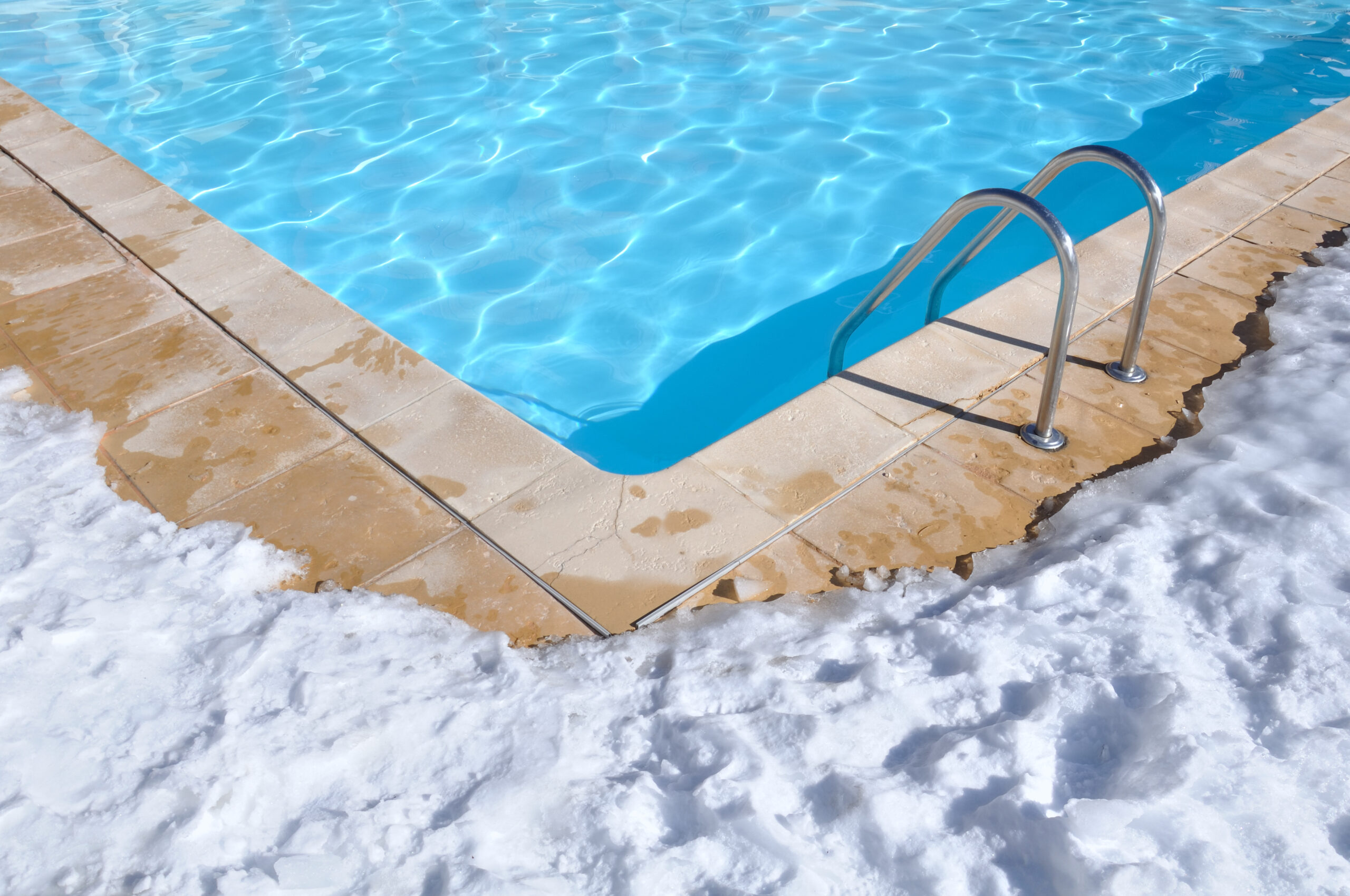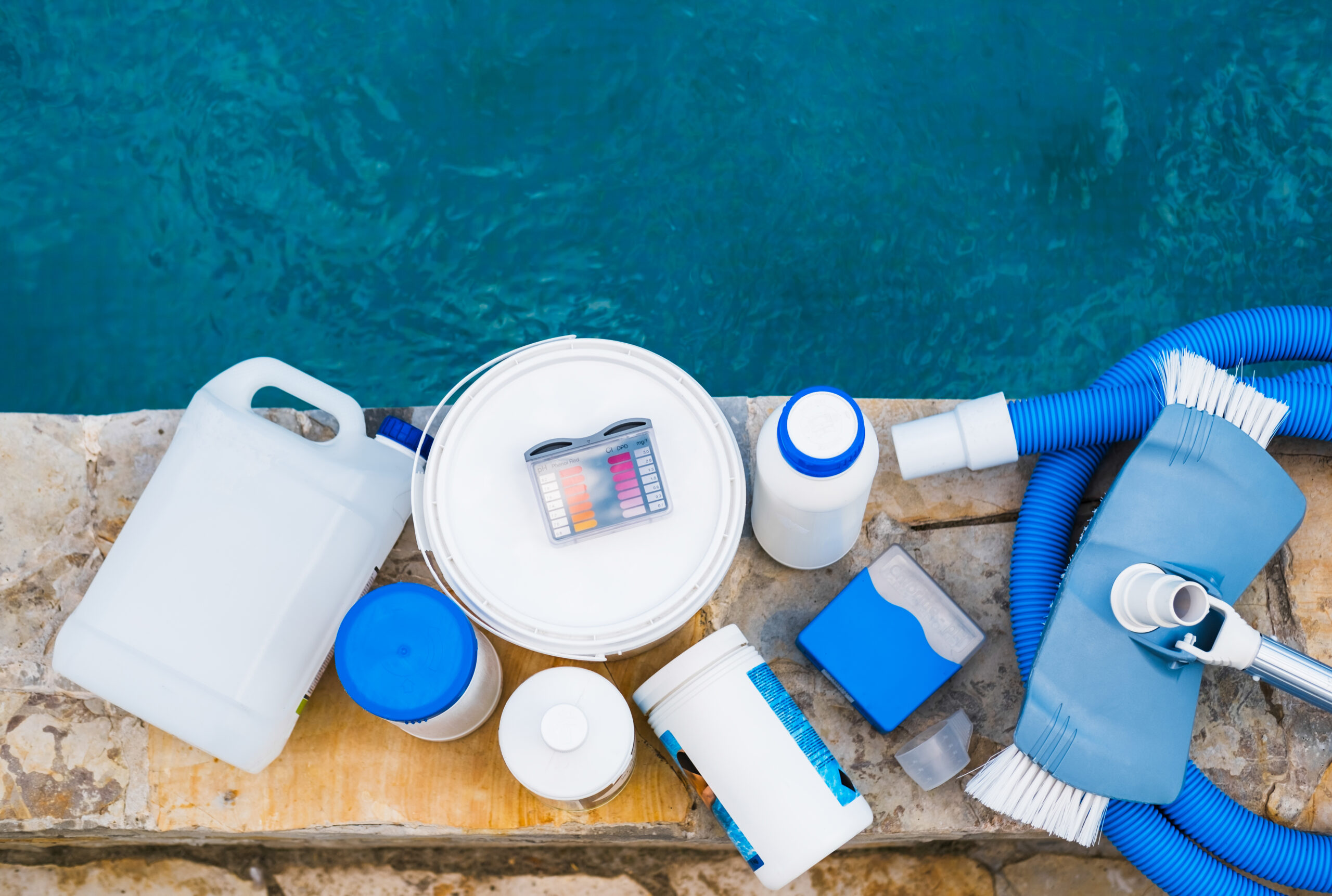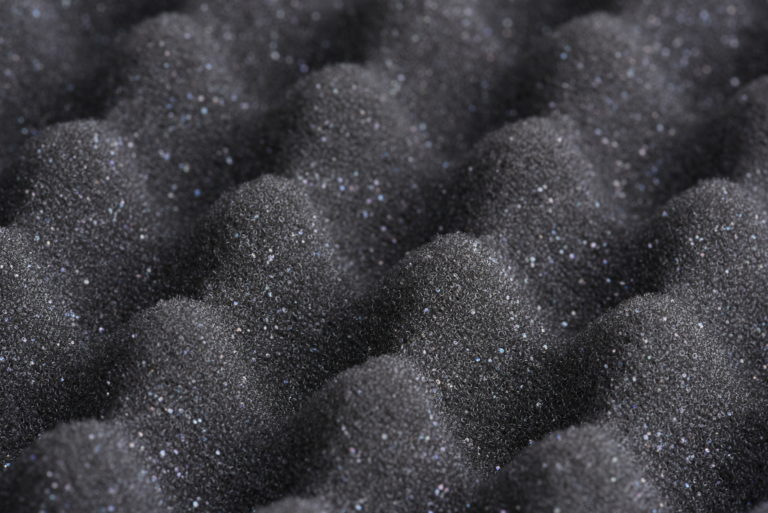Winterizing Your Pool Preparing for the Cold Months
You’re dreading the chill in the air, aren’t you? It’s not just because you’ll miss those sunny pool days, but also due to the daunting task of winterizing your pool.
Don’t fret! This guide will walk you through preparing your pool for freezing temps with ease.
From balancing water levels to troubleshooting common issues, we’ve got all your concerns covered.
So let’s dive in and get that pool winter-ready!

Understanding the Importance of Pool Winterization
You’ve got to understand, winterizing your pool isn’t just about saving you time and effort in the spring; it’s also about protecting your investment from serious damage during the cold months. Winterization consequences aren’t light matters. If neglected, they can lead to costly repairs or even a complete pool replacement.
Consider this: if water is left untended, it’ll freeze when temperatures drop. Frozen water expands, potentially causing cracks in the pool’s structure and damaging the filtration system. This kind of damage can cost thousands of dollars to repair! That’s where pool damage prevention comes into play.
It’s not only structural damage you should be concerned about either. A poorly maintained pool can become a breeding ground for bacteria and algae during the off-season. Come springtime, you might find yourself faced with murky green water that no one wants to dive into.
Step-by-step Guide to Pool Winterizing Process
Let’s dive into the step-by-step guide to getting your swimming hole ready for winter.
The first thing you’ll need is your winterizing equipment. This includes a pool cover, water bags (if needed), and a winterizing chemical kit. You’re also going to want to consider pool insulation.
Here’s a quick table to help you understand what each piece of equipment does:
| Equipment | Purpose | Emotion |
| Pool Cover | Keeps debris out and heat in | Confidence |
| Water Bags | Anchor the cover down, if necessary | Security |
| Winterizing Chemical Kit | Maintains water balance and prevents algae growth during off-season months | Peace of Mind |
| Pool Insulation (optional) | Helps retain heat and save energy costs over time | Satisfaction |
Now, let’s get started with the process. Remember that it’s important to take your time with each step. If done correctly, you’ll be rewarded with a well-preserved pool that will require less maintenance when summer rolls around again. Don’t rush-your future self will thank you!
Necessary Tools and Materials for Pool Winterization
Before you get started, it’s crucial to have all the necessary tools and materials on hand to properly seal off the swimming area for the season. You’re not just preparing your pool for winter, you’re safeguarding your investment from potential damage caused by cold weather.
For starters, you’ll need a pool cover. It’s an essential part of winter damage prevention as it protects your pool from debris and harsh elements.
Next up is water testing kits to ensure that your pool has balanced chemicals before you close it for the year. Also, don’t forget about antifreeze; this will protect your plumbing lines from freezing temperatures.
Pool equipment storage is equally important during this process. Your pump, filter, and heater should be stored in a dry and safe place where they can’t be damaged by frost or snowfall. For smaller items like brushes or skimmers, consider using dedicated storage boxes to keep them organized.
Lastly, grab some air pillows which help ice expand upwards rather than outwards, protecting the sides of your pool from pressure cracks.
Now that you’ve got all these tools and materials ready, let’s get down to business – winterizing your beloved oasis!
How to Balance Pool Water Before Winter
You’re about to delve into the world of water chemistry, a crucial component for maintaining your pool’s health during the harsh winter months.
You’ll discover the importance of pre-winter balancing techniques and how they can make or break your pool’s survival in freezing temperatures.
So strap in, it’s going to be an enlightening ride as we navigate through these essential elements together.
Understanding Water Chemistry”
Understanding water chemistry is crucial because it’ll determine how well your pool survives the winter. Chemical reactions in winter can drastically alter the seasonal water composition, throwing off your usual maintenance routine.
The cold weather could lead to imbalances, affecting both cleanliness and usability when you open back up in spring.
You must be aware of changes that occur due to shifts in temperature, pH levels, alkalinity, and calcium hardness. It’s not just about adding antifreeze or covering your pool; you need a firm understanding of what’s happening beneath the surface during those dormant months.
So educate yourself, invest time into learning about seasonal water composition changes and how they influence chemical reactions in winter. Your pool – and future self – will thank you.
Balancing Techniques Pre-Winter
It’s essential to master certain balancing techniques before the first frost hits. This way, you’ll ensure freezing damage prevention and uphold your winterized pool aesthetics.
Here are some steps to consider:
– First, adjust the pH level between 7.2 and 7.6 for optimal balance.
– Secondly, maintain alkalinity between 80 to 120 parts per million (ppm).
– Include a stabilizer in your water, aiming for 30 to 50 ppm.
– Don’t forget about calcium hardness; keep it within a range of 200 to 400 ppm.
– Lastly, shock your pool with high chlorine levels.

Importance of Cleaning Your Pool Prior to Winterization
Cleaning your pool before winter is crucial since it prevents potential damage and saves you time and effort in the spring. It’s not just about keeping the water clear; it’s also about algae prevention and maintaining pool aesthetics.
Algae love stagnant, unclean water, so if you don’t clean your pool properly, you’re basically inviting them to a feast. And they’ll take over by spring, making your job of getting your pool ready for swimming season a lot more difficult. So, get that scrub brush out and make sure every nook and cranny is free from dirt or grime.
Now let’s talk aesthetics. Pool aesthetics isn’t just for show – it also impacts how well your pool functions. Debris can clog filters and decrease their efficiency. Plus, who wants to look at a dirty pool all winter? Cleaning helps maintain its beauty throughout the cold months.
And remember, this isn’t a one-and-done deal – you’ve got to keep an eye on things even when you’re not actively using your pool. Regular check-ups during winter ensure any issues are caught early before they become bigger problems come springtime.
Tips for Safely Lowering Pool Water Level
So, you’ve cleaned your pool thoroughly. That’s fantastic! But now comes a crucial phase-lowering the water level in preparation for winter. You can’t just drain your pool willy-nilly; there are drainage safety measures to follow.
It’s important not to lower the water too much. Why? Because an empty pool risk damage from groundwater pressure or even pop out of the ground. So how do you determine the right level? This is where water level indicators come in handy. They’re tools that help ensure you don’t over-drain and jeopardize your pool’s structural integrity.
Start by turning off your pump and removing any attached hoses before beginning to drain. Then, use a submersible pump placed at the bottom of your pool, ensuring it doesn’t suck up any debris which could potentially clog it up.
Remember, for vinyl-lined pools, aim to lower it about 1 inch below the lowest part of the skimmer opening but no more than that. For plaster-lined and fiberglass pools, aim for 18 inches below the skimmer.
The Process of Covering Your Pool for Winter
After you’ve safely lowered the water level, the next step is to cover your pool securely for the off-season. But it’s not just about slapping on a cover and calling it a day. You’ve got to think about pool aesthetics and potential winter upgrades too.
Here’s a handy table that breaks down what you need to do:
| Task | Pool Aesthetics | Winter Upgrades |
| Cover Selection | Choose one that complements your backyard design. | Opt for insulated covers to conserve heat better. |
| Cleanliness | Ensure no leaves or debris mar your cover’s surface. It’ll look neater. | Regular cleaning improves longevity, saving you upgrade costs later. |
| Secure Fit | A well-fitted cover looks more appealing than sagging ones.| Tight fit reduces chances of cold air entering, preserving heater efficiency for future upgrades.
| Accessory Choices | Pick accessories that enhance your overall aesthetic.| Use this time to add any new features like lights or heaters.
| Maintenance Routine | Regular checks keep everything looking good.| Routine maintenance spots needed upgrades early.

Ongoing Maintenance During the Winter Months
Now that you’ve securely covered your pool for the winter, let’s shift gears a bit. Your focus should now be on maintaining everything during these frosty months. This includes proper winter equipment storage and taking care of any seasonal pool accessories.
When it comes to winter equipment storage, you can’t just toss everything into the shed and forget about it until springtime. It’s important to clean, dry, and store them in a safe place where they won’t get damaged by moisture or freezing temperatures. Any chemicals you used over the summer need to be stored properly as well. Check their labels for storage instructions – some may require warmer environments than your garage offers during wintertime.
Seasonal pool accessories also need attention. Things like floats, inflatable lounges or toys should be cleaned thoroughly then deflated before being stored away. If left inflated, they could crack due to cold temperatures.
Troubleshooting Common Winterization Problems
Despite diligent maintenance, you might run into some common problems during the winter that’ll need troubleshooting. Winter damage prevention is your first line of defense, but even with the best preventive strategies, issues can arise.
You might be dealing with frozen pipes or a pool cover weighed down by snow and ice. Perhaps you’re having trouble maintaining an optimal water level due to evaporation in colder weather. These are all challenges that could throw a wrench in your frost protection strategies.
Here’s what you should keep an eye out for:
– Frozen Pipes: This is arguably the most serious issue. Water expands when it freezes and can cause significant damage to your pool’s plumbing system.
– Heavy Pool Cover: Snow and ice buildup on your pool cover may cause it to sag or even tear over time.
– Water Level Fluctuations: Cold weather can increase evaporation rates, causing water levels in your pool to drop faster than usual.
When faced with these troubles, don’t panic! Remember: troubleshooting is just part of owning a pool during winter months. Stay proactive with maintenance and vigilant about potential problems, and you’ll have fewer headaches come springtime.
Frequently Asked Questions
What Are the Potential Consequences if I Don’t Winterize My Pool?
If you don’t winterize your pool, you’re risking serious consequences. You may face costly repairs due to pool cracking from frozen water expansion and equipment damages from the harsh winter conditions.
What Specific Tools Will I Need to Winterize My Pool?
To winterize your pool, you’ll need a few affordable winterizing tools. These include a pool cover, air compressor, and plug kit. Don’t forget to follow tool maintenance tips to ensure their longevity.
How Do I Balance My Pool Water in Preparation for Winter?
To balance your pool water, you’ll need to adjust pH, alkalinity, and hardness levels. Remember chemical storage tips for safety. Afterward, choose a durable pool cover to protect from debris and freezing temperatures.
How Do I Clean My Pool Before Winterization?
To clean your pool before winter, you’ll need to focus on pool sanitization. Use the right chemicals to kill any bacteria, algae, or other microorganisms. It’s all about creating a healthy swimming environment.
What Are Some Common Issues I Might Encounter During the Winterization Process?
You might face issues like winter damage to your pool’s structure and troubleshooting equipment problems. It’s important to properly balance chemicals and ensure all parts are functioning for effective winterization.








